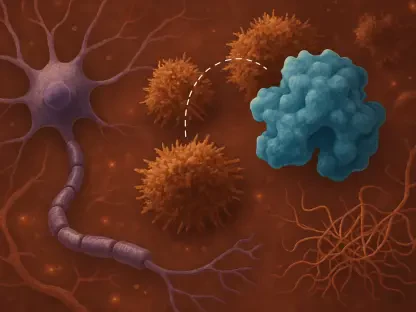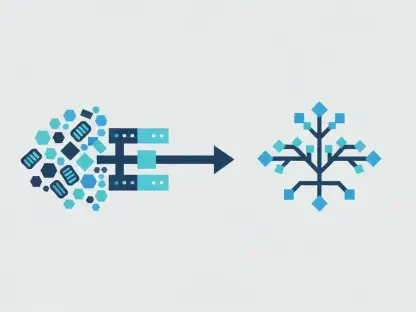The Centers for Medicare & Medicaid Services (CMS) has taken a significant step in healthcare innovation by unveiling a pioneering model designed to improve access to advanced treatments for Medicaid patients affected by sickle cell disease. This initiative, focused on the Cell and Gene Therapy (CGT) Access Model, embodies a strategic evolution in government policy, with the federal government directly negotiating outcomes-based agreements with CGT manufacturers. A critical component of this strategy is the provision for states to gain rebates and discounts if the therapies do not achieve anticipated results. This ensures the safeguarding of state resources while prioritizing patient interests.
Enhancing Collaborative Healthcare Delivery
Voluntary Participation and State Collaboration
The CMS initiative is marked by its voluntary participation structure, engaging 33 states, along with the District of Columbia and Puerto Rico. Together, these regions represent a substantial 84% of Medicaid beneficiaries battling sickle cell disease. This inclusion not only underscores the widespread impact of the initiative but also emphasizes the commitment to addressing healthcare disparities in underserved communities. The voluntary framework fosters collaboration among key stakeholders, including Medicaid agencies, patients, healthcare providers, and manufacturers, to effectively deliver transformative care.
The CMS Innovation Center actively supports this collaboration by offering federal support that is optional for participating states. This support includes up to $9.55 million per state, allocated for implementation, outreach, and ongoing monitoring of progress. This financial backing signifies the federal government’s dedication to overcoming barriers and facilitating a smooth transition to innovative treatment options. By fostering an environment of cooperation and shared objectives, the initiative aims to set a new standard for comprehensive health management in the Medicaid system.
CMS’s Strategic Vision for Broader Access
The flexibility of the CGT Access Model allows participating states to select specific start dates, ranging from January 2025 to January 2026. This adaptability is crucial for accommodating the diverse needs and resources of various states. Furthermore, the model contains provisions for potential future expansion to encompass high-cost, high-impact therapies for other diseases, showcasing CMS’s foresight in broadening access to cutting-edge healthcare solutions. This strategy aligns with CMS’s overarching goal to leverage medical innovation, such as gene therapies, to achieve cost-efficient health outcomes.
Amidst these efforts, the initiative addresses the debilitating impact of sickle cell disease by prioritizing effective management and resource allocation. By placing states at the forefront of care management, the model ensures that those responsible for direct patient interactions are equipped with the tools and knowledge necessary to drive meaningful change. This approach highlights a commitment to both innovation and practical application, underscoring CMS’s role in enhancing Medicaid’s overall efficiency.
Future Implications and Considerations
The Holistic Approach to Healthcare Access
The CMS initiative reflects a comprehensive approach to healthcare access, emphasizing seamless collaboration and shared responsibility. By prioritizing patient-centered care, the model aims to curtail long-term healthcare costs while enhancing quality of life for affected individuals. The initiative’s broad scope and targeted strategies indicate a substantial shift towards integrating modern therapies into the healthcare framework, enabling states to act as catalysts for positive change in patient outcomes.
Furthermore, the future implications of this model extend beyond the immediate scope of sickle cell disease, suggesting a potential paradigm shift in how innovative treatments are introduced and managed within public healthcare systems. As more therapies become available, states and healthcare providers will need to remain agile and open to integrating novel solutions that align with patient needs and systemic capabilities. This forward-looking perspective ensures that the groundwork laid by the CMS initiative can serve as a foundation for ongoing advancements.
Actionable Steps Moving Forward
The Centers for Medicare & Medicaid Services (CMS) has taken a groundbreaking step in healthcare innovation by introducing a new model aimed at enhancing access to sophisticated treatments for Medicaid patients suffering from sickle cell disease. This initiative, centered around the Cell and Gene Therapy (CGT) Access Model, represents a strategic transformation in government policy. It allows the federal government to engage directly with CGT manufacturers to negotiate outcomes-based agreements. One of the pivotal aspects of this strategy is the mechanism for states to receive rebates and discounts if the therapies fail to meet expected outcomes. This approach is designed to protect state financial resources while simultaneously prioritizing the well-being of patients. By ensuring that therapies deliver on their promises, CMS is fostering a more results-oriented healthcare environment. This model not only shows a proactive response to emerging medical treatments but also underscores a commitment to fiscal responsibility and patient-centric care.









